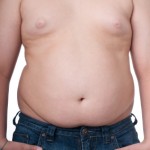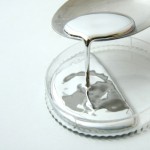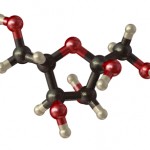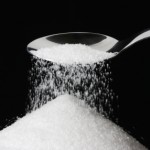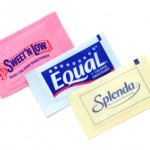I've been concerned about our burgeoning problem of excessive weight, so when the Journal of the American Medical Association for February 1, 2012 arrived, I was intrigued by the variety of articles touching on the subject. Let me start with a disclaimer: I have no clear-cut special competence, no magic bullet for preventing or treating obesity in our children. I do think it's a major threat to the upcoming generations here and elsewhere in the world. I am also very aware that its opposite numbers, hunger and even starvation, threaten whole populations around the globe.
But my own background, both as a physician and as someone who has successfully fought weight issues (I weighed 218 in 1969 and 148 this morning), has made me concentrate on the American epidemic of eating to excess as a major area of my interest.
The first article dealt with kids and adolescents. A group of CDC researchers reported an update on obesity in American kids, giving data from 199 to 2010. The newest statistics show nearly ten percent of our infants and toddlers are obese and close to 17% of our kids ages two to nineteen. As the kids got older, more boys than girls were obese in this survey with over 4,000 participants.
Then there was an article titled "Weight Loss Stratagies for Adolescents," based on a Boston Children's Hospital Conference roughly a year ago. The MD, PhD Harvard Professor of pediatrics who discussed the issue began with the case history of a particular obese girl, a fourteen-year-old who was five foot six and weighed nearly 250 pounds (giving her a body mass index,BMI, of 40). Her adoptive parents were overweight themselves, but had to learn to "back off" in their attempts to control her diet. There is some early data that suggests that parents can help by providing health food choices in the home and facilitating enjoyable physical activity throughout the day (versus a fixed "exercise time).
I had seen an example of that with some former neighbors whose boys, in order to have their one hour of "screen time," had to be outside playing for several hours at a time. Both youngsters were lean.
One critical point to be made is avoiding focusing on obese kids only. A large Danish study, published in the New England Journal of Medicine in December, 2007, followed over a quarter million children born in the 1930 to 1976 time period. Denmark established a national civil register of "vital statistics" in 1968 and enrolled everyone in the country, giving them a unique number, ironically termed their CPR number. Although that had nothing to do, I gather, with cardiopulmonary resuscitation, which is what I think CPR means, the study did look at risk factors for coronary heart disease.
The results are impressive and threatening: every one point increase in BMI across the spectrum was associated with an increased risk of coronary artery disease. A child didn't have to be fat to be at risk later on. One calculation estimated that a 13-year-old boy weighing 25 pounds more than the average had a one-third increase in the likelihood of having a heart attack before the age of sixty.
It's time to start helping our kids live leaner and longer, healthier lives.

